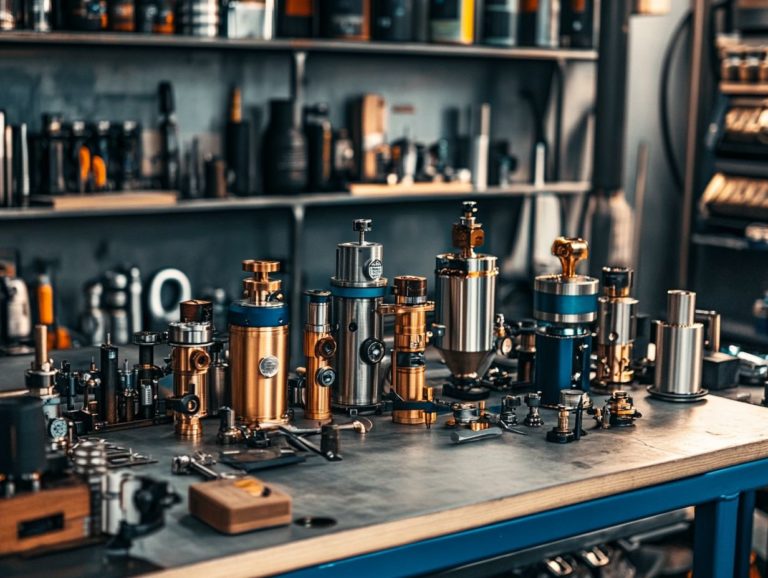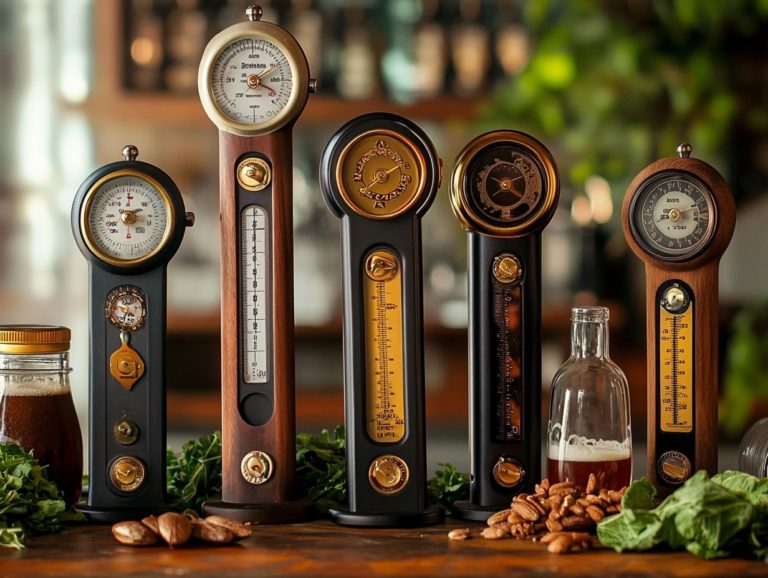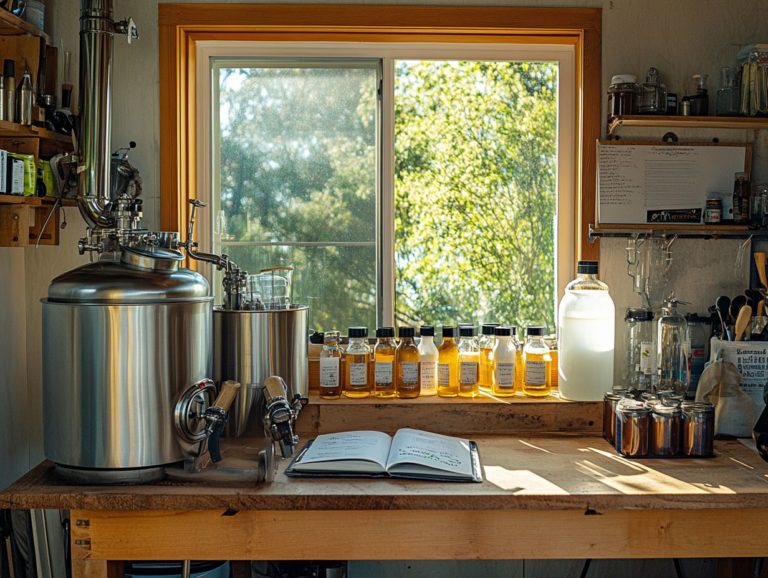Understanding the Benefits of Stainless Steel Equipment
Discover why stainless steel is not just a metal, but a game-changer across industries! Stainless steel equipment stands as a cornerstone in various industries, highly valued for its distinctive characteristics, practical advantages, and engineering versatility.
Its exceptional durability, resistance to corrosion, and hygienic properties make it the perfect choice for a wide array of applications, ranging from kitchen utensils to heavy-duty industrial machinery, including sectors like aerospace and pharmaceuticals.
This article delves into the defining features of stainless steel, shedding light on the manufacturing process that brings it to life, including specific grades like the 300 series and 400 series, as well as the myriad benefits that render it a favored material across sectors.
You will also explore the different types of stainless steel utilized for equipment, such as austenitic and ferritic steels, and receive essential care tips to ensure longevity and optimal performance.
Discover why stainless steel is more than just a material; it is, in fact, a valuable asset in everyday applications, admired for its long-term value and high strength.
Contents
- Key Takeaways:
- What Is Stainless Steel Equipment?
- How Is Stainless Steel Made?
- What Are The Benefits Of Using Stainless Steel Equipment?
- What Types of Stainless Steel Are Used for Equipment?
- Types of Stainless Steel
- Proper Care for Stainless Steel Equipment
- Maintaining Stainless Steel Equipment
- Frequently Asked Questions
- What are the benefits of using stainless steel equipment?
- How does stainless steel compare to other materials for equipment?
- Why is stainless steel a good choice for food and beverage industries?
- What makes stainless steel equipment low maintenance?
- Is stainless steel equipment environmentally friendly?
- What industries benefit from using stainless steel equipment?
Key Takeaways:
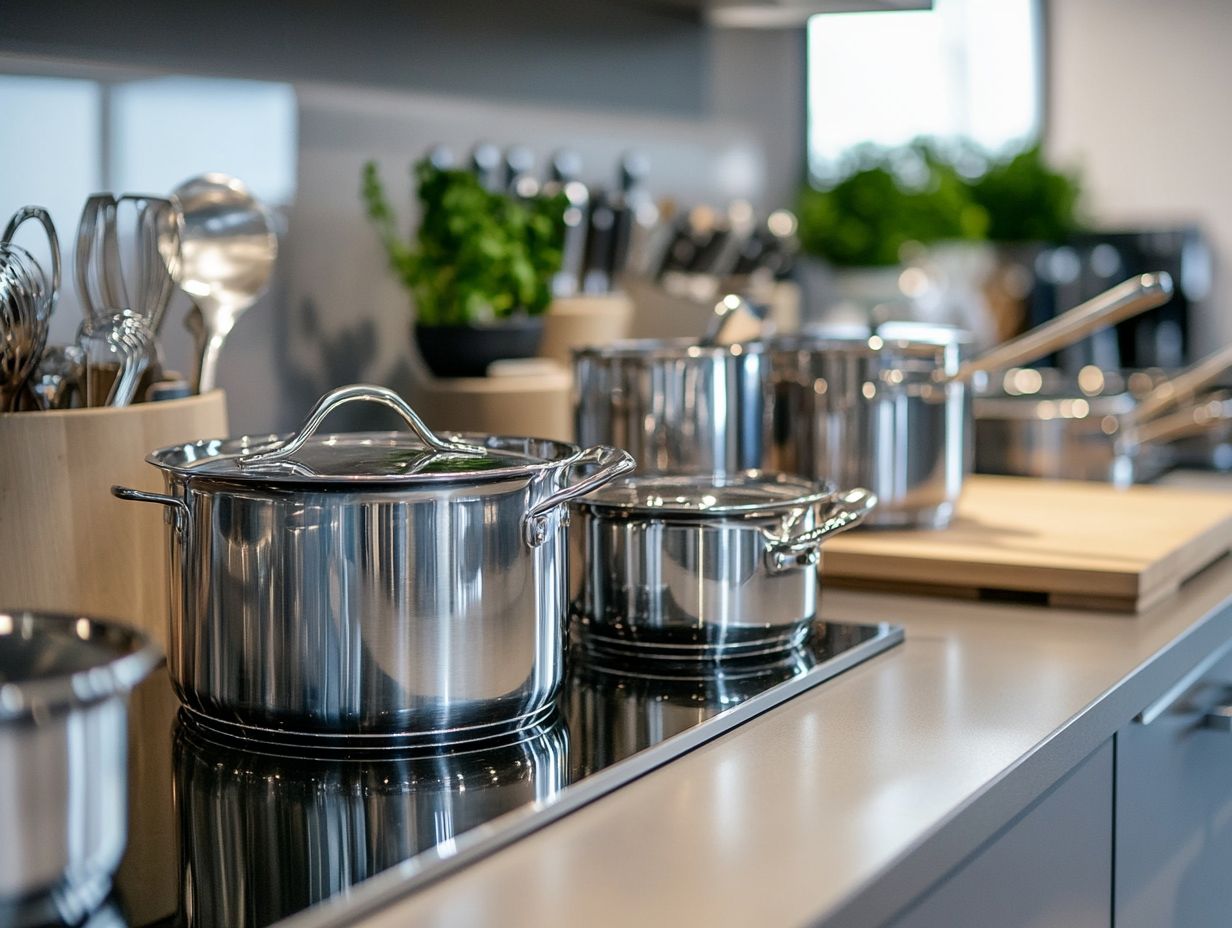
- Stainless steel equipment is known for its durability and longevity, making it a reliable choice for long-term use.
- With its corrosion-resistant properties, stainless steel equipment can withstand exposure to moisture and chemicals in various environments.
- Stainless steel also provides easy maintenance and cleaning, making it a practical choice for busy settings.
What Is Stainless Steel Equipment?
Stainless steel equipment encompasses a diverse range of tools and machinery crafted from stainless steel, a remarkably durable alloy celebrated for its outstanding corrosion resistance and hygienic properties. You ll find this equipment extensively used in industries like healthcare and food processing, where it is meticulously designed for enduring performance.
In settings where cleanliness and durability are non-negotiable, stainless steel, including grades like 304 and 410, emerges as the material of choice. Its impressive strength and great ability to handle heat facilitate a wide array of applications, from medical devices to manufacturing processes and even architectural designs.
What Are The Characteristics Of Stainless Steel?
The characteristics of stainless steel are truly remarkable, marked by exceptional corrosion resistance, heat resistance, and impressive strength, making it a preferred material in architecture, engineering, and design. These qualities make it an ideal material for a diverse array of applications, ranging from medical equipment to food processing. You ll find that stainless steel is not only durable but also excels in maintaining hygiene an essential factor in industries that demand strict cleanliness standards.
This unique combination of properties allows stainless steel, particularly austenitic and ferritic varieties, to surpass alternative materials, especially in environments exposed to harsh chemicals or extreme temperatures. Consider the healthcare sector: surgical instruments and hospital equipment crafted from stainless steel can endure repeated sterilization processes without any degradation, thereby ensuring patient safety and the longevity of the equipment.
In the food and beverage industry, stainless steel emerges as the preferred choice for processing equipment, with manufacturers like Cedarstone Industry leading the way. Its non-porous surface resists bacterial growth, enhancing food safety and quality. Plus, the ease of cleaning and impressive stain resistance further cement its reputation as the go-to material for these demanding applications.
Consider upgrading to stainless steel equipment today for durability and peace of mind!
How Is Stainless Steel Made?
Ever wondered how the durable, shiny metal we use every day is made? Stainless steel is crafted through a sophisticated process that takes raw materials iron ore, chromium, nickel, and molybdenum and transforms them into a remarkable alloy through precise manufacturing methods. This intricate balance of elements during production bestows the material with its signature traits, such as exceptional corrosion resistance and impressive strength.
The journey begins with melting iron ore in a furnace, where the temperatures soar to ensure a thorough blending of the raw materials, a process fundamental to fabrication. Once the metal reaches its molten state, adding chromium and nickel becomes vital; chromium significantly boosts the steel’s resistance to rust and corrosion, while nickel lends toughness and ductility to the mix.
Next comes the alloying phase, the stage where different metals are mixed to create specific types of stainless steel, allowing for the creation of various grades such as 304 and 410, each tailored for specific applications. After the alloy is formed, casting follows, resulting in shapes that are not only functional but also easy to handle and work with.
What s truly commendable is the recycling aspect of stainless steel, a practice that underscores its commitment to sustainability and environmental responsibility. It not only conserves valuable resources but also diminishes the environmental impact of the manufacturing process, reflecting a commitment to sustainability that holds increasing importance in today s industrial landscape.
What Are The Benefits Of Using Stainless Steel Equipment?
Choosing stainless steel isn’t just smart; it’s revolutionary for your business! Opting for stainless steel equipment presents you with a multitude of advantages, including remarkable durability, outstanding corrosion resistance, heat resistance, and superior hygiene.
This makes it the preferred choice across various industries, from food processing to healthcare. These qualities not only extend the lifespan of your equipment, delivering long-term value, but also guarantee safety and cleanliness essential factors in environments where high hygiene standards are non-negotiable.
1. Durability and Longevity
The durability and longevity of stainless steel equipment make it a smart investment across various sectors, particularly in industries where reliability is crucial, such as healthcare, food processing, and chemical processing. The ability of stainless steel to withstand wear and tear ensures your equipment can perform optimally for extended periods, providing exceptional long-term value.
This material is inherently resistant to corrosion, which is especially important for medical devices that must meet strict hygiene standards. For instance, surgical instruments made from stainless steel not only inhibit bacterial growth but also endure frequent sterilization processes without losing their integrity.
In the aerospace industry, components crafted from stainless steel are preferred for their strength and lightweight characteristics, allowing for the construction of more efficient aircraft that consume less fuel and require minimal maintenance. These attributes underscore how thoughtfully designed stainless steel equipment can elevate performance and safety, solidifying its essential role in high-stakes environments.
Don’t miss out on these benefits of stainless steel equipment that can elevate your operations immediately!
2. Corrosion Resistance
Corrosion resistance stands out as one of the most compelling features of stainless steel. It allows your equipment to maintain its integrity and performance even in challenging environments filled with moisture and corrosive substances, as seen in the chemical processing and pharmaceuticals industries. This natural resistance minimizes the need for frequent maintenance, ultimately prolonging the operational life of your equipment.
The secret to this remarkable property lies in the composition of stainless steel, particularly the presence of chromium, a metal that helps prevent rust. When exposed to oxygen, chromium forms a thin, protective oxide layer on the surface. This chromium-rich layer acts as a formidable barrier, preventing further oxidation and deterioration and effectively safeguarding the underlying metal.
In industries such as chemical processing and pharmaceuticals, where machinery and containers routinely encounter acids, solvents, and other harsh chemicals, this corrosion resistance is essential for ensuring the safety and purity of your products. Companies like Blickman and CME Corp offer specialized solutions for these needs.
For example, in a pharmaceutical plant, stainless steel tanks and piping systems not only resist corrosion but also help keep the area clean and safe for making drugs, significantly reducing contamination risks.
Thus, the incorporation of chromium in stainless steel is not merely an enhancement; it’s a crucial characteristic that underpins the reliability and functionality of equipment across a myriad of sectors.
3. Easy Maintenance and Cleaning
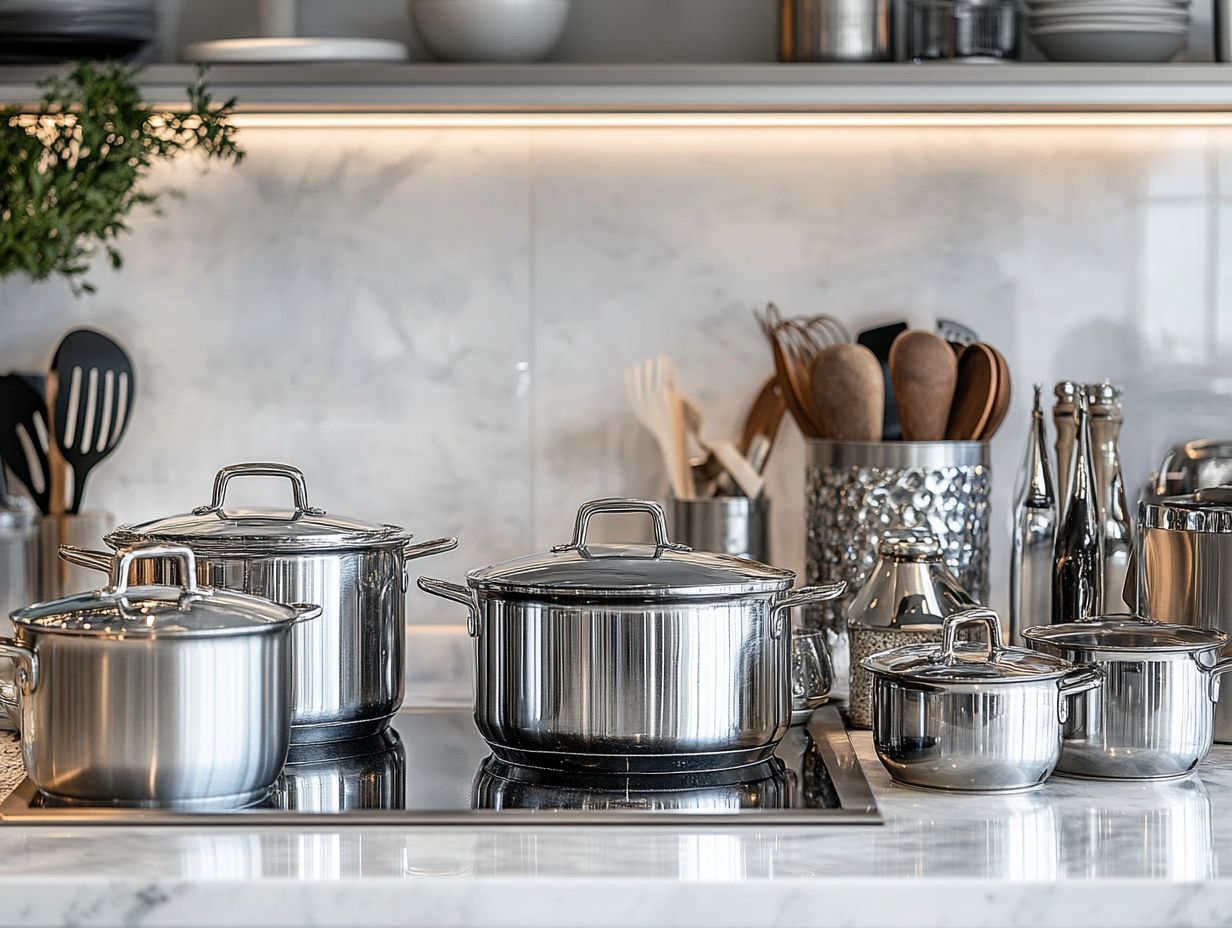
People love stainless steel equipment for its easy maintenance and cleaning. This makes it an exceptional choice for environments where hygiene is paramount, such as hospitals, food processing facilities, and pharmaceutical plants. The smooth surface of stainless steel significantly reduces the buildup of dirt and bacteria, allowing for efficient cleaning routines.
To uphold optimal hygiene, implement specific cleaning methods designed for stainless steel. For daily cleaning, a mild detergent mixed with warm water is ideal. Additionally, specialized stainless steel cleaners are perfect for tackling tougher stains or pesky fingerprints.
In medical settings, equipment like surgical tools and imaging devices greatly benefit from these practices, as thorough disinfection is essential to prevent infections. Likewise, in the food industry, items such as food preparation tables and commercial refrigerators must comply with strict hygiene standards.
Regularly scheduled deep cleaning, along with the use of non-abrasive cloths, helps maintain the integrity of the material. This ensures that safety and cleanliness are consistently upheld, thus enhancing the long-term value of your stainless steel equipment.
Using mild detergents in cleaning helps maintain the equipment’s longevity and performance.
4. Hygienic and Safe for Food Contact
Stainless steel is renowned for its hygiene and safety when it comes to food contact. This is thanks to its non-porous surface and impressive resistance to corrosion. Both properties effectively prevent bacterial growth and contamination, ensuring food safety and quality in the food and beverage industry. This makes it an essential material in the food processing industry, ensuring that the products you consume are safe.
In food production facilities, where strict hygiene standards reign supreme, you need materials that are not only durable but also easy to clean and maintain. Stainless steel excels in this regard. Its smooth surface allows for effortless sanitation, which is crucial in settings like commercial kitchens and meat processing plants, where the risk of cross-contamination is ever-present.
Materials like stainless steel are chosen for their corrosion resistance and heat resistance, ensuring their long-term value in these demanding environments.
Consider this: restaurants often choose stainless steel countertops and equipment for their unmatched hygiene and style, as well as their practical benefits in upholding food safety. Stainless steel contains elements like chromium and nickel that enhance its corrosion resistance. Furthermore, food processing machinery crafted from stainless steel helps maintain compliance with regulatory health codes, reinforcing the commitment of producers to prioritize consumer well-being.
5. Versatility and Aesthetics
The versatility and aesthetics of stainless steel undoubtedly make it a premier choice for a variety of applications, from industrial equipment to architectural masterpieces. Its sleek appearance and adaptability allow it to blend seamlessly into different environments while retaining its practicality. Moreover, stainless steel’s durability and recycling potential make it a sustainable option for numerous industries.
In architecture, you ll often find stainless steel gracing the facades of modern skyscrapers, creating a stunning contrast with glass and concrete. It reflects sunlight beautifully, enhancing the visual appeal of any building. Similarly, in product design, stainless steel shines in kitchen appliances like refrigerators and ovens, where its smooth finish elevates the modern aesthetic while ensuring durability against wear and corrosion.
The material s use in engineering and design further showcases its extensive capabilities. But innovations don t stop there. Think about sustainable furniture or artistic installations where stainless steel s striking visual properties and robust strength elevate everyday objects and spaces. It s no wonder this material has become a staple in both commercial and residential settings.
What Types of Stainless Steel Are Used for Equipment?
Explore the exciting varieties of stainless steel available! Stainless steel comes in various types, primarily classified into the 300 series, 400 series, and specialized grades like austenitic, ferritic, martensitic, duplex, and precipitation hardening stainless steel.
Austenitic, ferritic, and martensitic are types of stainless steel, each with distinct properties that suit them for specific applications, whether it be in medical devices or food processing equipment.
1. Austenitic Stainless Steel
Austenitic stainless steel, particularly grade 304, serves as a cornerstone in various applications, thanks to its exceptional corrosion resistance and hygiene properties. This makes it a prime choice for the food processing and medical equipment sectors. With its high levels of chromium and nickel, this type of stainless steel stands out for its durability and formability.
These remarkable characteristics not only bolster its strength but also enable it to endure rigorous cleaning processes an absolute necessity in environments where strict hygiene standards are essential. You ll find austenitic stainless steel in a range of applications, from the manufacturing of kitchen equipment like sinks and countertops to components in pharmaceutical machinery.
Its non-reactive nature makes it essential for storage tanks and piping systems that must adhere to stringent sanitary regulations. Companies like Blickman and CME Corp often use this grade in their products for the healthcare and pharmaceuticals industries. By opting for this grade, industries can significantly mitigate the risk of contamination, ensuring both product integrity and safety.
Types of Stainless Steel
2. Ferritic Stainless Steel
Ferritic stainless steel, particularly grade 410, stands out for its durability and moderate corrosion resistance. It is an excellent choice for applications that require high strength without extreme demands.
You ll often find it in automotive and appliance components, where cost-effectiveness meets adequate performance. Additionally, its incorporation of molybdenum enhances its resistance to corrosion in certain environments.
Beyond its common uses, this type of stainless steel offers impressive formability and weldability, allowing you to shape it into various forms without compromising structural integrity.
In the construction industry, ferritic stainless steel is employed for cladding and roofing, capitalizing on its weather resistance and visual appeal.
Kitchenware manufacturers also lean towards ferritic grades for products like cutlery and cookware, as they can withstand regular use and exposure to moisture without a hitch. The mechanical properties of ferritic stainless steel, coupled with its versatility, make it a valuable asset across a myriad of sectors.
3. Martensitic Stainless Steel
Martensitic stainless steel, including grade 410, stands out with its remarkable strength and impact resistance. It is an ideal choice for applications that demand toughness and resilience.
You ll often find this type of stainless steel in cutting tools and industrial blades, where durability is non-negotiable.
Alongside its impressive tensile strength, martensitic stainless steel boasts excellent wear resistance, a critical characteristic in high-friction environments.
If you re in an industry that relies on this material, you ll appreciate its value in products like turbocharger shafts, pump shafts, and valve components, where the ability to endure extreme conditions is essential.
What s more, its capacity to be hardened through heat treatment takes its performance to the next level. This feature makes it a go-to option for equipment subjected to significant mechanical stress.
This unique blend of hardness and toughness ensures that tools crafted from this alloy can tackle demanding tasks effectively, leading to enhanced efficiency and minimized downtime in your industrial operations.
4. Duplex Stainless Steel
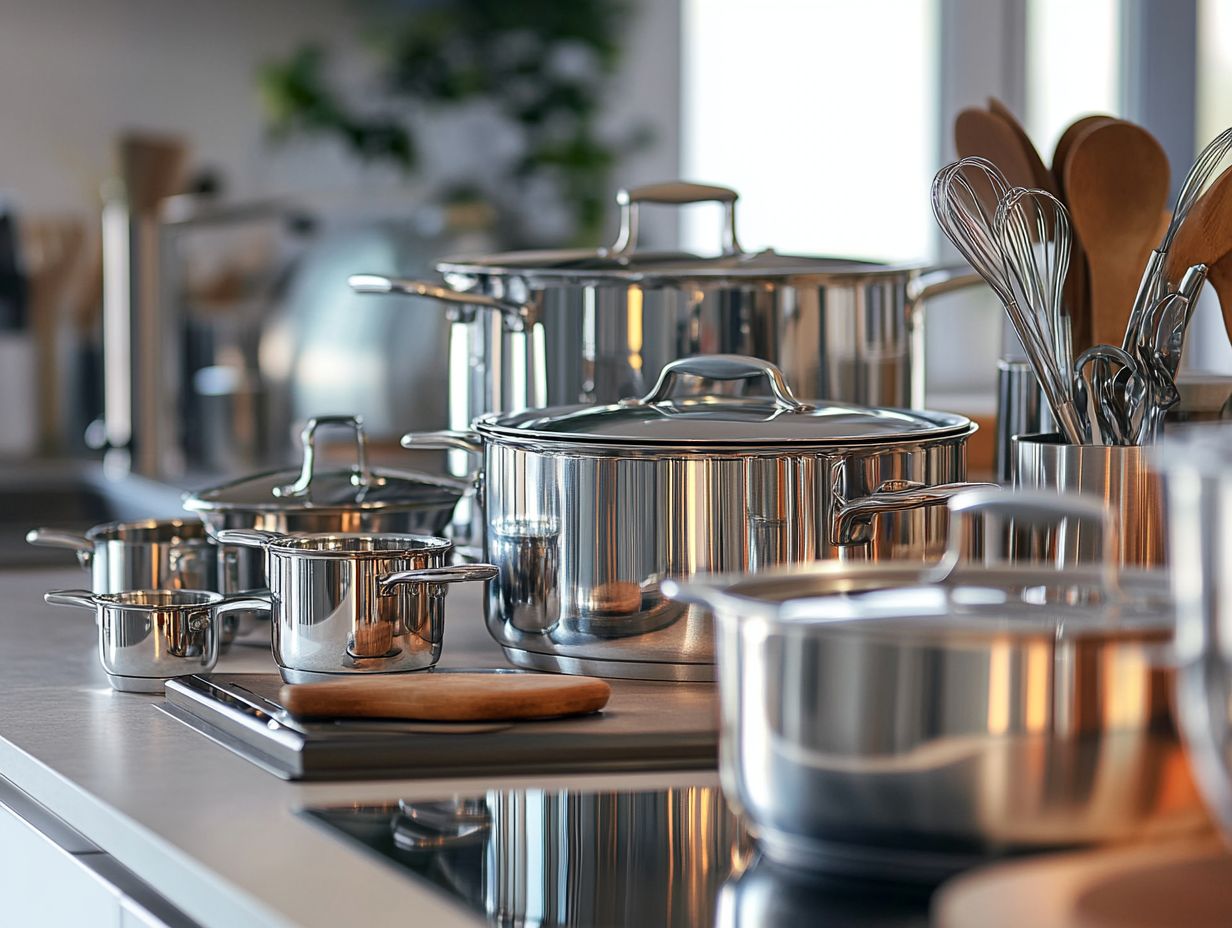
Duplex stainless steel expertly merges the remarkable properties of both austenitic and ferritic stainless steels, delivering impressive strength alongside outstanding corrosion resistance. This combination makes it an exceptional choice for demanding environments, such as chemical processing and offshore applications.
The material’s unique internal structure enhances its durability and toughness, positioning it as the ideal solution for industries where equipment faces aggressive media.
Duplex stainless steel offers superior resistance to stress corrosion cracking compared to traditional stainless steels. This quality is why it is often the go-to material for constructing pressure vessels and heat exchangers, capable of enduring substantial mechanical stresses.
In the oil and gas industry, applications such as pipelines and valves further showcase the advantages of this versatile material, ensuring longevity and reliability even in the most extreme conditions.
5. Precipitation Hardening Stainless Steel
Precipitation hardening stainless steel is a remarkable material that attains exceptional strength through a meticulous heat treatment process. This makes it ideal for applications demanding superior mechanical properties and durability. You ll often find this type of stainless steel in critical sectors like aerospace and medical devices, where performance is non-negotiable.
The process begins with solution treating the alloy at elevated temperatures, followed by aging a phase during which the alloy is maintained at a lower temperature. This carefully controlled method allows fine precipitates (tiny particles that improve strength) to form within the steel matrix. As a result, the material significantly boosts its yield strength and overall toughness.
Components crafted from this steel can endure extreme environments. This is a crucial feature in industries like aerospace, where lightweight yet robust materials are essential. In the medical realm, devices such as surgical instruments and implants benefit tremendously from this treatment. The improved corrosion resistance and mechanical stability lead to longer service lives and enhanced patient safety.
Proper Care for Stainless Steel Equipment
Caring for your stainless steel equipment is paramount to ensuring its longevity and optimal performance across various applications, particularly in the medical and food processing industries. Leading suppliers like Blickman, CME Corp, and Cedarstone Industry emphasize the importance of proper care to maximize the lifespan of their stainless steel products.
By committing to regular cleaning and maintenance, you can easily prevent corrosion and uphold the highest standards of hygiene. Adherence to specific guidelines is essential in safeguarding your equipment, allowing it to perform at its best for years to come.
1. Regular Cleaning and Maintenance
Regular cleaning and maintenance of stainless steel equipment are essential for preserving its appearance and functionality, particularly in industries that uphold stringent hygiene standards, such as healthcare and food processing. Establishing a routine effectively prevents the accumulation of contaminants and corrosion, which is especially critical in the aerospace sector where precision and reliability are paramount.
To achieve a consistent clean, consider utilizing specific cleaning agents like mild soap and warm water. This combination effectively removes dirt without causing damage to the surface. For tougher stains, solutions containing vinegar or baking soda can work wonders by lifting grime while avoiding harsh chemicals. These practices are vital for industries like medical devices and food and beverage processing, where maintaining hygiene is critical.
When wiping down surfaces, using soft cloths or microfiber towels is key to preventing scratches. In environments where hygiene is critical, routinely disinfect surfaces with an alcohol-based cleaner or a hydrogen peroxide solution. Consider using cleaning techniques that incorporate chromium and nickel-based products for added corrosion resistance.
By implementing these methods, you not only prolong the life of your stainless steel equipment but also demonstrate a commitment to maintaining a safe and sanitary environment for both staff and patients. This commitment is particularly important in the food and beverage and healthcare industries, where hygiene is paramount.
Maintaining Stainless Steel Equipment
2. Avoiding Harsh Chemicals and Abrasives
Avoiding harsh chemicals and abrasives is crucial for maintaining the integrity of your stainless steel equipment. These substances can damage the surface and diminish its corrosion resistance over time. Choose mild cleaners to keep your equipment in top shape! Opt for mild cleaners specifically designed for stainless steel. For instance, stainless steel grades such as 304 and 410 offer enhanced resistance to harsh environments.
These gentle alternatives can effectively lift dirt and grease without scratching the metal or compromising its finish. Products containing vinegar or baking soda make excellent choices, as they are well-known for their cleaning power without the risk of damaging your equipment. Specialty stainless steel cleaners that are free from chlorine or ammonia offer a safe solution while effectively restoring that coveted shine. The use of molybdenum in some stainless steel grades enhances cleaning properties and corrosion resistance.
Using improper cleaning agents, such as scouring pads or bleach-based cleaners, can create micro-scratches that dull the appearance and invite rust, ultimately shortening the lifespan of your valuable kitchen appliances and tools. Act now to choose the right products and keep your stainless steel gleaming for years!
This is particularly essential in medical equipment and pharmaceuticals, where durability and corrosion resistance are critical.
3. Proper Storage and Handling
Proper storage and handling of stainless steel equipment is essential for preventing damage and ensuring optimal performance, especially in settings where the equipment endures frequent use or tough conditions. By implementing meticulous practices during storage and handling, you can significantly extend the lifespan of your equipment. Employing stainless steel grades like austenitic and ferritic series grades that describe different structures of stainless steel such as 300 series and 400 series, can also enhance the equipment’s impact resistance and overall long-term value.
To keep your stainless steel in peak condition, it’s wise to conduct regular inspections for any signs of wear or damage. Consider using protective coverings, such as padded storage racks or specially designed cases, to add an extra layer of defense against scratches and dings. This is particularly important in medical devices and aerospace industries, where precision and protection are paramount.
When stacking items, placing softer materials between them can effectively prevent unintended contact that might cause surface blemishes. Additionally, training your personnel on best practices for handling stainless steel fosters a culture of care, significantly reducing the risk of accidental damage during use or transport. Companies like CME Corp and Blickman specialize in manufacturing and providing high-quality stainless steel storage and handling solutions.
4. Regular Inspection and Repair
Conducting regular inspections and timely repairs on your stainless steel equipment is vital to identifying wear and preventing significant issues that could jeopardize functionality. By establishing a routine inspection schedule, you can maintain performance while upholding hygiene standards.
This approach is particularly beneficial in industries such as food processing and chemical processing, where equipment must meet stringent cleanliness and safety regulations. This proactive strategy empowers you to spot early signs of deterioration, such as rust, scratches, or dents, which could escalate into more serious problems if ignored.
During these evaluations, it s crucial to check for loose fittings, corrosion, and any signs of leaks. These issues can impact the equipment’s efficiency and the overall safety of your operations. Ensuring that your equipment is in top condition is essential for maintaining food safety standards and meeting regulatory requirements in aerospace and healthcare settings.
Common repairs you might encounter include:
- Tightening bolts
- Applying protective coatings
- Using specialized cleaning solutions to restore the surface
By addressing these concerns proactively, you will not only extend the lifespan of your stainless steel equipment but also ensure optimal performance and compliance with health regulations. Companies like Cedarstone Industry offer comprehensive maintenance and repair services that help keep your equipment in top shape.
Frequently Asked Questions
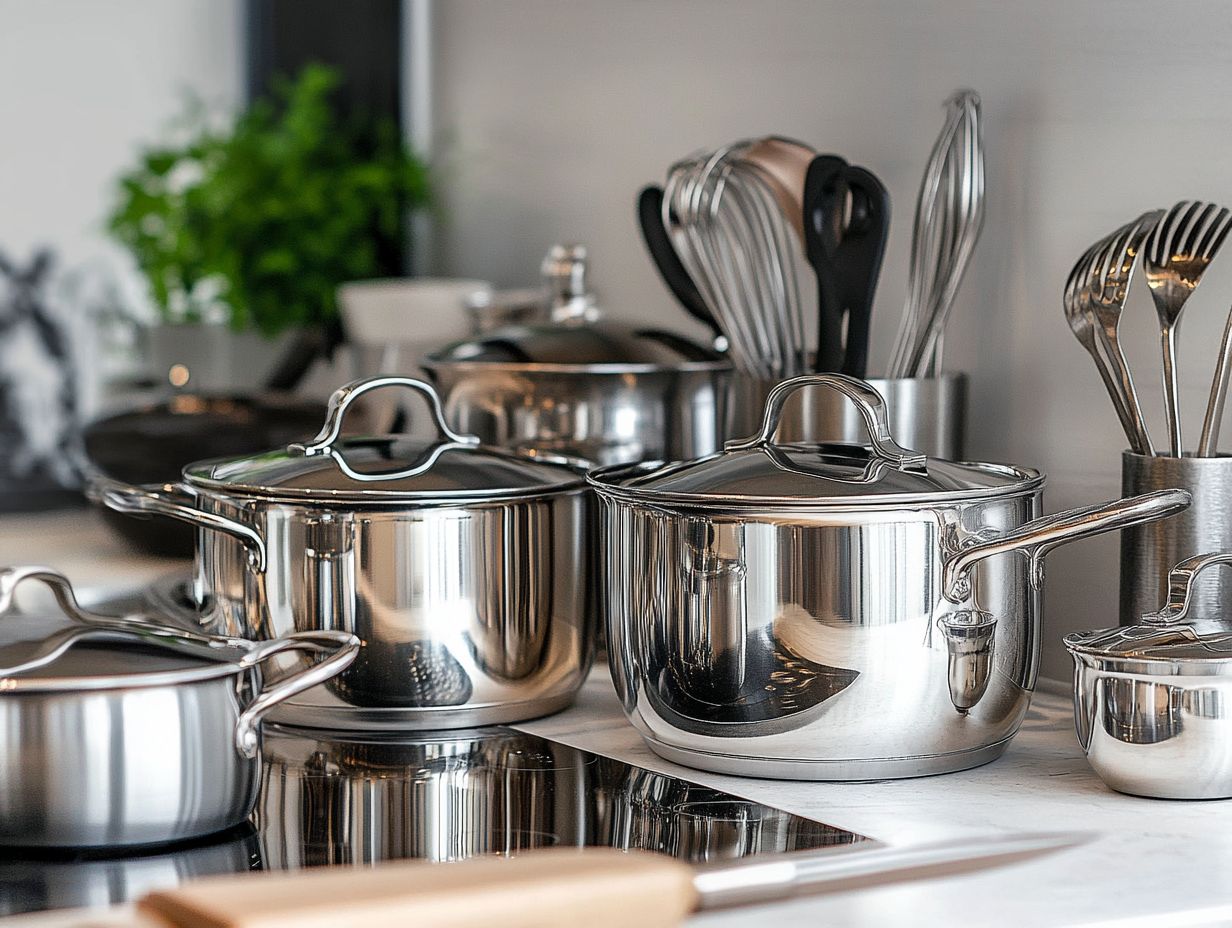
What are the benefits of using stainless steel equipment?
Stainless steel is widely used in engineering and design due to its high strength and versatility. It offers numerous benefits, including durability, corrosion resistance, and ease of maintenance.
It is also heat resistant and stain resistant, making it a popular choice for a variety of industries, including pharmaceuticals and food processing.
How does stainless steel compare to other materials for equipment?
Stainless steel has several advantages over other materials used for equipment. It is stronger and more durable than plastic or aluminum, and it is also more resistant to rust and corrosion than other metals like copper or iron.
Furthermore, stainless steel is widely used in medical devices and architecture for its aesthetic appeal and long-lasting properties.
Why is stainless steel a good choice for food and beverage industries?
Stainless steel is a non-porous material, meaning it doesn’t absorb bacteria or contaminants. This property makes it a safe and hygienic choice for the food and beverage industries where cleanliness is crucial.
Its fabrication qualities also make it ideal for complex medical equipment and pharmaceutical applications.
What makes stainless steel equipment low maintenance?
Stainless steel is easy to clean and maintain, requiring only soap and water for regular cleaning. It resists scratches and dents, reducing the need for repairs or replacements.
This low maintenance requirement is why it is favored in chemical processing and other high-demand environments.
Is stainless steel equipment environmentally friendly?
Stainless steel is made from natural materials and is fully recyclable, making it an environmentally friendly choice for equipment. It also has a long lifespan, reducing the need for frequent replacements and waste.
This sustainability makes stainless steel a smart choice for engineering and design projects that prioritize recycling and long-term value.
What industries benefit from using stainless steel equipment?
Stainless steel equipment is widely used in various industries, including food and beverage, pharmaceutical, chemical, and automotive. It is also commonly used in household appliances, construction, and architecture.
Major suppliers like Blickman, CME Corp, and Cedarstone Industry provide high-quality stainless steel solutions tailored to these sectors.


